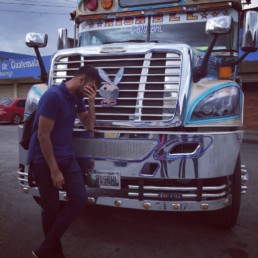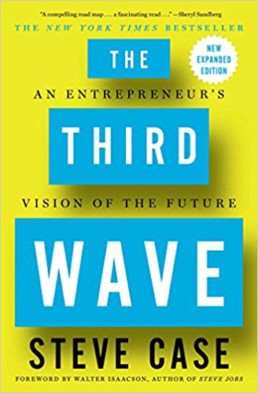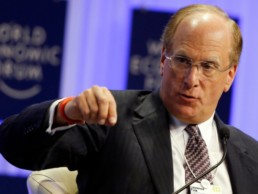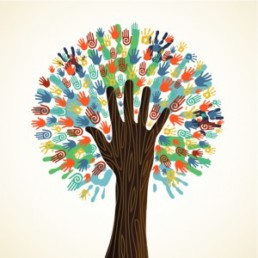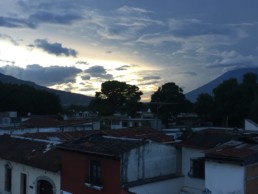The Probability of Survival on a Chicken Bus
I was told never to look up safety statistics of chicken buses here in Guatemala. I was told that if you did, you would probably never ride them. So, I didn’t look them up. Until today.
The Case
A quick refresher on the mystical origins of “chicken buses” – chicken buses or camionetas are retired school buses from the United States that mysteriously make their way into many Central American countries and obviously, to Guatemala. They are repainted and re-branded, sporting shades of colors you couldn’t even imagine adorning a bus, and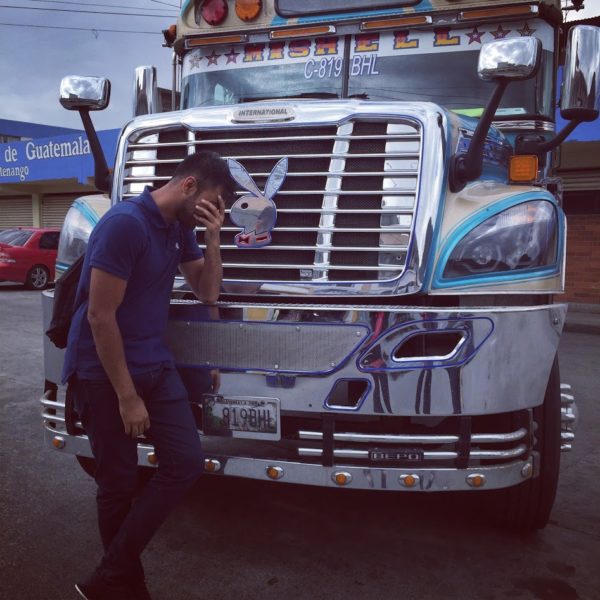 ripping off brands that don’t really align with the transportation industry (found one with the Playboy bunny once). They are almost creative masterpieces of art. They are also notorious for their need for speed around the mountains of Guatemala, feeling sometimes more like over-stuffed roller-coasters without seat-belts. So yes, it can be thrilling if that is your thing. And oh, they do get robbed occasionally, and drivers have been killed by gangs to facilitate a successful heist of the rest of hapless populous in the bus.
ripping off brands that don’t really align with the transportation industry (found one with the Playboy bunny once). They are almost creative masterpieces of art. They are also notorious for their need for speed around the mountains of Guatemala, feeling sometimes more like over-stuffed roller-coasters without seat-belts. So yes, it can be thrilling if that is your thing. And oh, they do get robbed occasionally, and drivers have been killed by gangs to facilitate a successful heist of the rest of hapless populous in the bus.
All the above quite directly points to a high perceived level of peril. But I am a numbers guy, so, contrary to popular advice, I wanted to quantify the likelihood of my death on this real, government-subsidized “public transport” option. What I found will blow you away. That is, if you care about these kinds of things. If not, your life won’t really change much.
The Evidence
After my admittedly rapid (but efficient) research on God’s gift to Earth (Google), I found that Guatemala is ranked as the 64th most dangerous by the WHO when it comes to road deaths per 100,000 people. About 22 people out of every 100,000 die due to road accidents here. For context, that’s 0.022%. For more context, Zimbabwe, which gets the honor of being #1 on the list, is at 75 people out of every 100,000, almost 4 times more. For even more context, and I don’t mean to get too dark with this, but there is a higher chance of a Guatemalan dying of Diabetes (70 people out of every 100,000) than you dying in a road accident in Guatemala. Granted, this research is not specifically related to chicken buses, but it can’t be all that more (or “significantly more”) dangerous. That’s because chicken buses are most definitely a part of the subset, and I have not really been impressed by the average non-chicken-bus Guatemalan driver. I tried looking for numbers on chicken buses specifically, but my robust twenty minutes of research did not pull any meaningful information. All I found was anecdotal evidence or what I like to call scary-stories-that-foster-irrational-fear (SSTFIF) evidence.
This quote from the United States Bureau of Diplomatic Security exemplifies some classic SSTFIF evidence. Notice the number of data points they use while describing public transportation in Guatemala:
Safety of public transportation: Poor
The most common resource for public transportation is the network of informal bus lines. These bus routes are serviced by brightly colored, recycled school buses. The buses are poorly maintained, and the drivers are barely qualified, creating an untenable security situation. Additionally, these bus lines are prime targets for extortions and robberies. Bus drivers are habitually assaulted or murdered while on their routes as a consequence of the growing extortion problem.
Or I can do the math for you – number of data points used: 0.
The Conclusion
Look, I am not saying your chicken bus is not going to fly off a hill and into the lake. All I am saying is that after my super-extensive fifteen minutes of research, the overall evidence tells us that there is a much higher probability of you being just fine. You might get robbed, but you will most definitely get a good story out it. Also, you should not fear looking up safety statistics of chicken buses in Guatemala. But, if you do find some data to the contrary that didn’t surface during my rigorous ten minutes of googling, you don’t need to share it with me. I rather not know. Because who am I kidding, ignorance is bliss.
Uncles & Book Reviews
The Uncle
So, my genius uncle is an angel investor (among many other amazing things). He invests in start-ups that make sense and he invests in books of all sorts. I’ll leave the start-ups for later, but let’s shine the light for a hot second on this book fetish of his. He is a serial reader, and his reading speed is the stuff of legends and folklore in our family, described using adjectives that range from photographic to lightening. Apparently, he has found errors in encyclopedias, written letters to editors, stumping them with grammatic finesse that even the Oxfords of the world would be proud. His love and knowledge of and for books is so vast that it is like currency for him. And, he has a big heart with this book-tastic currency. Most riveting conversations with him end with at least two or three incredible book recommendations, and they are always on point. Inspired by his recent foray into angel investing, he angel-invested books in me. He loaned me two books, “as long as I gave them back” and the interest he charged was that I needed to write book-reviews on them. Don’t get me wrong, it was an awesome deal – outside of just giving me the books, it also gave me a decent nudge to devour them before I saw him next.
This blog post is the interest I owe him – maybe not exactly what he expected, but to be fair, he didn’t set clear rules for what these book reviews could or could not contain.
Rapid-fire Book Review 1 - The Third Wave: An Entrepreneur’s Vision Of The Future by Steve Case
I want to be an entrepreneur. That’s why the uncle recommended this book to me. And it lived up to all the hype. So, if you are thinking of starting something or have any interest in the start-up space, indulge in this book for sure.
Steve Case is best known for being the CEO of AOL at the beginning of the internet world. He is basically famous for commercializing the internet as we know it. In this book, he talks about the three “waves,” or the current technological growth phases, we have been in and are about to be unleashed into. The first wave was the creation and commercialization of the internet. The second wave was the proliferation and capitalization of the internet - the emergence of the Googles and the Facebooks of the world - and this is the wave we are still sort of in. But Case says that we are about to embark on the third wave, where the world won’t just be dominated by the internet of certain things, but with the internet of everything. Which, to be honest, makes a ton of sense. After setting these waves up, he uses his wealth of knowledge and experience to predict what would be needed to succeed as an entrepreneur in this third wave.
I think that different people take different things from a book. What stayed with me from this book are the three “P”s that will be needed to succeed in the third wave – policy, partnerships and perseverance. He mentions how the days of sitting in your basement and writing code to create a Tinder-like application are almost gone, and how we are moving into a rapidly developing, morally conscious and constantly connected world. He stresses on the importance of social enterprises and impact investing, and is actually walking the talk through Case Foundation. So yes, he has my heart. One cool thing was that, in this book, he actually mentions and opines on my old CEO at iHeartMedia, which I might or might not have read more than once - they worked together at AOL once-upon-a-time.
Also, it’s a super-easy read, double-spaced and short-ish. Don’t we all love good, quick reads?
Rapid-fire Book Review 2 – The Beautiful Tree by James Tooley
I believe that education is the long-term solution to poverty, and pretty much everything. That’s why the uncle recommended this book to me. And, it provided me with a new perspective on the importance of private education for the poor and the importance of looking at a problem with fresh eyes. If you’re in the education space and you care about poverty, you must read this thoroughly-researched book.
The hypothesis the author, Tooley, spends 300-odd pages proving is that the poor can and are educating themselves. The poor understand the value of a good education and if the broken public sector can’t provide it, they are willing to pay small, in-home private schools to get their children educated. Tooley has spent decades in the education space, and his travels and experiments across the developing world in Asia and Africa have provided him with overwhelming evidence that private schools are not only an actual thing in the developing world, they are a relatively more effective means of education than the public sector, and in many cases – more affordable and more accessible. The biggest challenge he faces in his conquest to prove his hypothesis is to convince local education leaders that private schools for the poor are real. Nobody seems to believe him, and nobody local seemed to have unearthed this phenomenon, including laureates like Amartya Sen. Everybody just seemed to be too close to the problem, refusing to believe something as “preposterous” as the poor paying for education (instead of taking advantage of free public schooling) could be true. Honestly, it’s a fascinating journey, corroborating anecdotes with statistically significant evidence that has the potential to make “education for all” a reality.
The other thing I personally took from this book is the importance of having a global, unbiased perspective while approaching any problem. James Tooley was able to uncover a trend going thousands of miles away from his home, while the people closest were completely oblivious to it. Also, private schools for the poor are essentially social enterprises. The importance of making them financially sustainable provides automatic checks to ensure that there is a level of quality that is maintained. Also, teacher attendance rates are significantly higher than in public schools.
I obviously can’t do justice to Tooley’s years of research in a rapid-fire review. But the book was inspiring, well thought-out and well researched. It’s not the shortest read but is worth the patience and the repetition.
Epilogue
This angel investment of books that the uncle made in me was an impact investment. Both books added value to what I want to do in the future, were extremely relevant and made me blog. I think the uncle should continue making these investments with even more gusto, but perhaps with a clause of sorts that clarifies what the book-review expectations are.
P.S. Here are some other books that have struck a chord with me.
Denting The Social Impact Space
Best thing I have read all year? This. Granted I am heavily biased and that letter is a few months old now, but I cannot stress enough how pivotal this could be for the social impact space. Social enterprise is the future, and by social enterprise, I don’t mean non-profits, or companies that make any little social impact, I mean companies that put social impact over everything else. They are financially sustainable not by relying on grants or donations, but instead, on a profitable business model that is not a slave to profit maximization. A 10% margin, before profit reinvestment, is all you need.
I have this draconian theory that every single organization should be a social enterprise. That letter from the CEO of BlackRock to all their portfolio companies just made my theory a little less draconian. He fully embraces the patiently blossoming stakeholder-centric model over the explicitly capitalistic and banal, shareholder-centric model. And he doesn’t embrace it just emotionally, he lays it out as a future requirement for every company that BlackRock invests in. Yes, he doesn’t explicitly call for social enterprises, but he highlights the importance of having a long-term sustainable strategy and the absolute necessity of a “positive contribution to society.” I’ll take it. This is one the kingpins of Corporate America, with almost $6 trillion in assets under management, setting a precedence, and throwing down the gauntlet. I hope others follow suit.
I think this development is on the back of a recent trend in our generation to want to make a difference. Deloitte recently came out with a study where they looked at the 2014 Fortune 500 global companies and found that 89% of them incorporated at least some sort of social impact in what they were doing. Granted, 53% of them were engaging in good-old “Corporate Social Responsibility”, but again, I’ll take it. Meanwhile, Impact Investing is the new cool kid in the equity space. An asset class of its own, it pits financial performance on par with social impact performance, which is revolutionary for the finance world – it might have a heart after all. Personally, I think the impact bit should take primacy over the financial return bit, but for now, I’ll take it.
It is not all hunky-dory though. Measuring impact is this world’s Everest – sometimes it is just way too subjective for us to be objective about, but the Effective Altruism movement is trying. Psychologically, our approach towards non-profits is a lot more critical than for-profits, and that just does not make sense, ask Dan Pallotta about it. There are still tussles over definitions and semantics. B Corps is a great start, but we still need to create a legal corporate entity classification for social enterprises and incentivize them through substantial tax-breaks. There’s a long way to go, but Mr. Fink at BlackRock just gave us a big push. Here’s to a lot more pushes.
An Open Letter To My Little Niece
My darling Ria,
You are about three months old. A tiny ball of innocence. Uncorrupted and carefree. Oblivious to most everything, but maybe for once, oblivious with reason, with an inability to process anything, because your brain is still figuring everything out. You have a slight dent in your head because that little brain of yours needs to grow. It will bloom with the wonders of the world, constantly challenged by temptation that it will sometimes give in to. But, that’s okay. You will find that balance, that serene peace with yourself that your mother embodies and that sheer strength your mother personifies. Your mother’s ability to reason emotion will pervade your wondrous life with awe, with the right medicine at the right time, and you will forever be loved.
If you do ever read this, a few decades down the road, remember that I am (or used to be) a wannabe-poet. So, I have been forever finding a way to take the cheese out of the cheesy. It’s hard, and to be fair, it’s a two-way street. I hope just the right amount of cheese melts away at your sentiments as you read through this. I think innocence, life and connection warrant infinite emotions.
There are a few things I want to say to you.
I’ve had the honor and the privilege of changing your nappies. I have put you to bed more times than once, sometimes to the music of someone I love. I have danced embarrassingly in front of you way more times than I would like to admit, but you never judged me. You looked at me, sometimes confused, sometimes with a smile, and sometimes, you danced yourself. Yes, most un-smitten people would call your dance, “cycling leg movements, coupled with offbeat hand gestures, topped off with constantly evolving eyebrow thrusts”. But I’m smitten, so I hope you dance all your life, with or without rhythm, with or without music, but with a whole ton of heart.
I am proud to say that you are also a master burp-er, one that even we, your mother’s burp-tastic side of the family, celebrate with awe. Your baby farts give adult farts a run for their money, making you, quite the Rockstar among your peers. There are limited ways for you to communicate at this age, so I love how you make the most of what you have.
We are still far from figuring out what your hair color is, and what your eye color will morph into, but the bets are on. Your golden skin is the perfect blend between your pale father and your dark mother. You have your dad’s eyebrows but your mum’s eyes, your dad’s chin and your mother’s nose, but your smile is a delightful combination of them both, and everything nice. Your legs, though, are more like “tangdi kababs”, but that will change.
When you cry, it’s like the world has gone still. All the chaos in my head is concentrated on yours. Because you are too young to cry without reason. So, it’s time to play detective, and comfort the discomfort. But I think I am a pretty bad detective, so I play more of the “throw-everything-at-it” game – music, books, soft toys, taking you in my arms, singing off-key, dancing, pretending everything is okay, and somehow something works.
When you look into my eyes and smile, there is an explosion of joy. Your face lights up like a few million stars clustered together in the clear sky, luring me into finding my own happy stars. It’s amazing how powerful your tiny fragile little self can be.
Right now, I am looking at you and you are fast asleep. Yes, that sounds creepy but I feel comforted when I see your chest move up and down. You can call it paranoia, but it comes from a good place. I probably won’t get to spend as much time with you as I want to. You can thank ambition, distance and a laundry list of excuses for all that. But you will always have a piece of my heart, my soul, my brain or anything else you grow up to believe is the right form of the emotional self. You are in the best possible hands. Your mother is my second mother from the same mother – she is already a pro at this, and you are lucky to have her as your guardian. Your father is as sharp as a knife, and this combination of reason and intelligence sets you up to be the ultimate hybrid baby.
Here’s to dancing your way through life, clasping on to innocence as long as you can, with a few burps and a few farts along the way.
A timeless hug,
Your Mamu, Anish.
“Legalizing” Social Enterprise
“I want to make a social impact.” — That’s almost a trend right now in the minds of millennials, young professionals and students in general. It’s cool to care, and I love that this is becoming a thing. I am proud (or guilty — however you want to view it) of falling under this spell. But, one thing that bothers me about this hypnosis is the absence of an official, legal recognition of the golden child that is social enterprise.
Yes, “social impact” is and should remain vague enough as anything that does good for humanity and / or the environment. “Non-profits” have a whole IRS section associated with them and are wonderfully defined — I do have issues with calling them non-profits vs something more optimistic like “for-purpose” or “for-impact,” but that’s just semantics — am content with their legal formalization. Woohoo. But, why can’t we do the same for social enterprises?
Social enterprise to me is the future. The idea of having a financially-sustainable social impact business is mesmerizing because it is arguably immune to a sometimes-crippling dependence on donations and grants. What is even more enticing is that a social enterprise is still open to donations and grants, but those donations and grants can be used on growth strategies instead of sustenance — investment in scale, prototyping a new idea, or buying a Super bowl commercial (why not?)
The issue amidst this gold dust is that there is no legal definition of a “social enterprise” in particular. I think it is time we have one. Just like we have a section for non-profits in the IRS, it is time to make room for social enterprises as well, and not just in the U.S., but around the globe. Throw in some significant tax-breaks too if possible. Incentivizing social enterprise can play a key role in increasing the rate at which we make the world a better place.
And a lot of the hard work is already done. B-corps, ironically a non-profit organization, is already doing a stupendous job of certifying organizations that put social impact over profit. Benefit Corporation, almost an offshoot of B-corps, goes a step further to provide legal protection to social organizations from shareholder law-suits.
There is also a somewhat universal acknowledgement of what a social enterprise is, or at least everyone is beating around the same bush. For instance, Stanford Social Innovation Review — arguably the leaders in inspiring leaders of social change — took a whack at the definition, and hit on the right nodes — financial sustainability and primacy of social impact. But they also roped in this complex notion of “shifting the equilibrium” (like Apple did with the iPhone, but in the social impact space). In theory, this equilibrium-shifting ambition is hunky-dory, but puts excessive pressure on a social enterprise and severely filters out a lot of social businesses. Plus, it is excessively subjective in an already subjective space, and does not help if we want a legal corporate framework for social enterprises. Mohammed Yunus also threw in his definition of social business (yes, some people say business, some enterprise, semantics again, but let’s get our nomenclature consistent already FFS). He is also in the same ballpark and stresses on the importance of putting social impact first, and over (not side by side) profit.
My personal view is very aligned with this. Putting social impact over profit also separates social enterprises from enterprises that have a social impact. That’s not just a play on words, that’s real. Google can have a tremendous social impact, but it is not a social enterprise because its primary purpose is not to drive social change. It wouldn’t deserve the shiny gold dust.
The other breakthrough in this space is the focus on a stakeholder-centric model over a shareholder-centric model. Jaqueline Novogratz, the founder of +Acumen, embodied this in her year-end note to donors:
“As it becomes clear that business must move away from shareholder primacy, we are doubling down our investments in companies that unapologetically consider all stakeholders — starting with the poor — at the heart of their purpose.”
So, there we have it — a concept that has significant differentiation, a definition that is somewhat consistent across the board, an organization that is doing a stellar job at certifying social impact organizations and a level of legal protection for “Benefit Corporations” in many states in the U.S. The only thing left is to STOP beating around the bush, take motivation from the precedence set by non-profits / for-purpose organizations and write out a section 501(c)(15) (or whatever) that legally sanctifies social enterprises. Like non-profits, they should receive some sort of a tax-break, maybe not a full tax-exemption, but a significantly lower tax rate on their net income. They should be allowed to have an IPO, but with enough controls in place to ensure their social impact vision and their key stakeholders are not compromised. This is crucial to encourage and incentivize social enterprises.
We need to use all our ever-increasing human IQ and EQ to come up with financially sustainable solutions that put real social impact first. We need to differentiate true social enterprises from wannabe-social enterprises. Or else, we’ll have Joe’s Carwash call itself a social enterprise because they use natural tap water.
Personally, I hope that fifty years from now every single enterprise is a social enterprise, especially in the developed world. And no, not the Joe’s Carwash kind.
P.S. Impact Investing — you’re next.
Guatemala, You Beauty
There is so much to say. Guatemala has opened its arms and embraced me with nothing but love. And yes, all this sounds corny, but contentment breeds corniness, fortunately or unfortunately.
I am not going to lie, I was a little scared. Everyone and their mothers couldn’t stop warning me about the dangers that engulf this Central American country. And then these other mothers spoke to my mother, and filled her up with bother, and that was not fun either. And then there was this other brady bunch that didn’t know what "Guatemala" was. All in all, the uncertainty of where I was going, and the certainty that I was going to be robbed as soon as I got off the flight, made it all very interesting off the bat.
I landed, and I did not get robbed. I met a friendly taxi-driver who friendly-ly drove me to the bus station, where I got on a friendly bus, and made it to the friendly city of Xela some four hours from the capital, where I was greeted by my friendly Spanish teacher, who took me in a friendly cab to my super-friendly host family, and all this friendly hospitality made me all giddy inside. It’s not to say that Guatemala is not dangerous at times, but it’s like any other developing country – if you do stupid things, and go to stupidly dangerous places, or get ridiculously unlucky, something not-so-fun might happen. I know of friends who have been robbed at knifepoint even in New York.
After flushing this unreasonable fear out of my system fairly quickly, I was in dreamland. Yes, the showers here are not great, the internet is choppy, the lights go out occasionally coupled with a mini-earthquake or two, but all that has not mattered. I have been happier than I have ever been in my whole entire life (remember contentment = corny?), and my problems are trivial compared to the seismic schizophrenia Corporate America used to give me. I know what I am trying to achieve, where I am trying to go and I am no longer dreaming about it, I am actually doing it. And it has all made sense so far. I spent my first month learning Spanish in a school exploding with love and goodness. My teacher was the personification of patience and prudence, and dealt with my constant self-destruction, sublimely. I was grounded a little because I thought I would be rattling off Spanish in a month, but learning a language is bloody hard, and jawbreakingly frustrating. But the folks at the Sisai School of Spanish made it easier. Every weekday, after five hours of Spanish class, the teachers took turns in taking us students on local excursions and activities. And these weren’t just any excursions, these were well thought-out, immersive experiences that you would only get if you spent enough time with the local folks out here. We went to secluded towns adorned by zero tourists, but instead by the warmth of the local Mayan people. We explored the legend of San Simon and the beauty of Mayan philosophy (I am getting an “El Ajau” tattoo before I leave.) We did Salsa classes and cooking classes, played football and crammed ourselves in the back of a small pickup along with twelve other people who magically found ways to make room where room didn’t exist. We learnt about the city, about the people, and we danced together, sang together, ate together and drank together. It was a glorious time with a glorious group of genuine people, and I was so overwhelmed by their warmth.
The people here are something else. There is a genuine flow of love right from the way everyone greets each other, to how everyone respects each other, and to the way everyone treats one another. I missed this in the States and in Dubai, so I am going to embrace it. And embody it. As much as I can. My host-family took me in as one of their own, and my host-mother became very quickly my second mother. They fed me like their own child, and showered me with all the picante they could muster, as soon as they figured out that spice was my thing.
After a month of drowning myself in Spanish, it was time to begin my fellowship. And this moment was really important for me. It was like I had waited all my life to finally start doing exactly what I wanted to do – and not just any random thing, but finally landing on the road that I had created, that is headed in exactly the direction I want it to go in. It is so liberating and so empowering. And believe it or not, the one month I have spent at this fellowship has totally lived up to the hype. I am still in Disneyland and this honeymoon phase isn’t ending as of yet. I hope it never does.
If you have ever thought of doing something like this, do it right now. Don’t let these rules created by society control you. It’ll be the best decision you ever make.
P.S. Indians are pretty non-existent here in Guatemala (I thought we were everywhere?) I seriously think there are only two of us in Xela – one chef / owner of the BEST restaurant in town, and me. So yes, I now know what it somewhat feels like to be Icelandic in just about any country except for Iceland.

